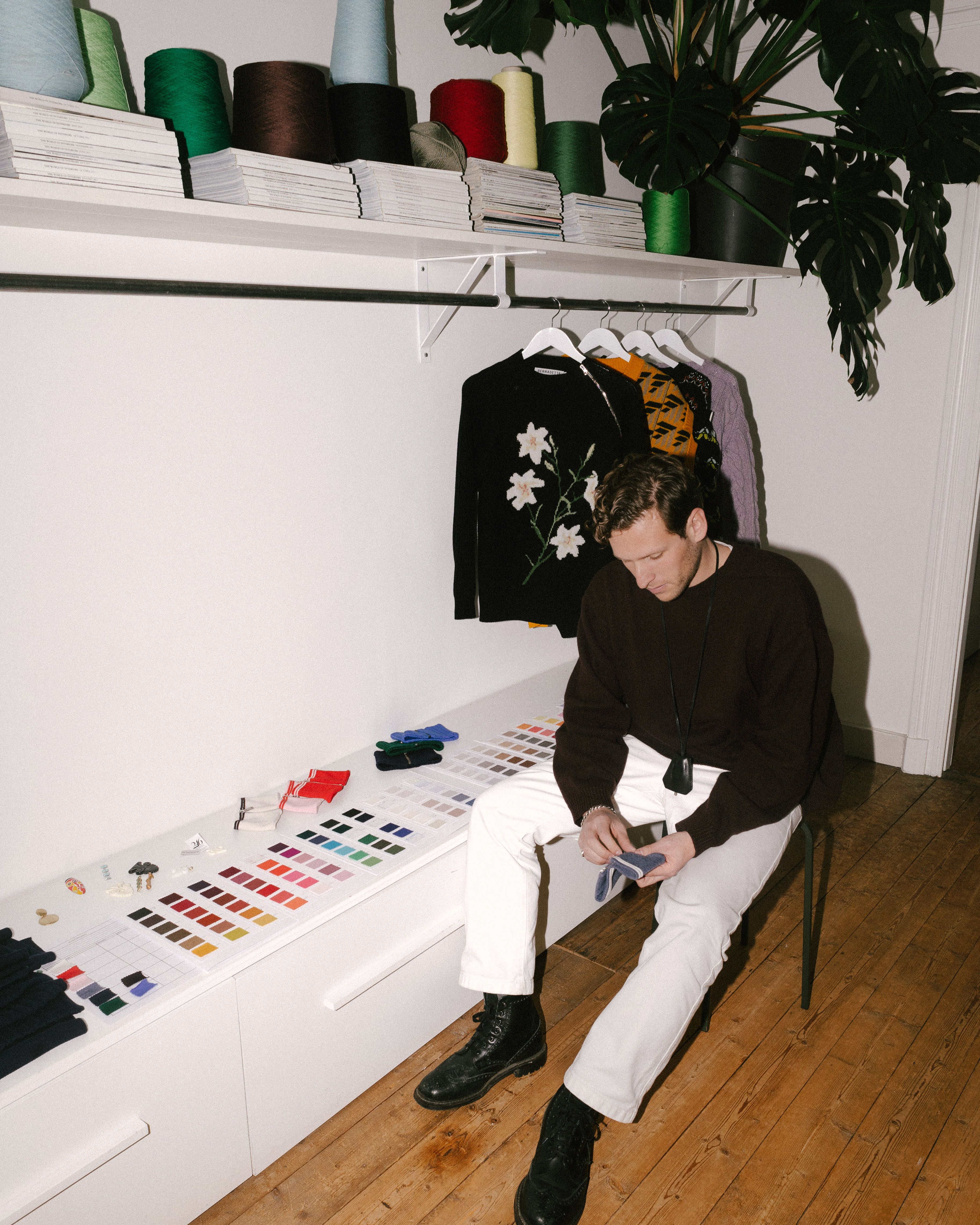EDUARD BOTH
Exploring knitwear's endless possibilities
Getting cozy, comfortable, and creative in the studio with designer Eduard Both.

After discovering the world of fashion and its unlimited artistry at an exhibition in his hometown of Antwerp at the age of eight, Eduard knew he wanted to become a fashion designer.
After discovering the world of fashion and its unlimited artistry at an exhibition in his hometown of Antwerp at the age of eight, Eduard knew he wanted to become a fashion designer.
He pursued his dreams, and ten years later, as a fashion student at Antwerp's Royal Academy of Fine Arts, he became passionate about knitwear. His explorations in the timeless craft found expression in all of collections throughout his Bachelor and Master degree years of study and design.

Craftsmanship with Evolving Expertise
While completing his studies, Eduard debuted his first collection with his own brand CAP, which featured a small collection of socks. Soon after, he was offered a dream position as a knitwear designer at Miu Miu. The experiences he gained at the famous fashion house served him very well. When he felt the time was right, Eduard leaped to become an independent designer. He found himself assisting other brands with their knitwear collections and became a freelance designer for brands such as Bernadette, Meryll Rogge, and Julie Kegels.
Spending time with Eduard, his charisma shines through. He has a handsome, open face and an infectious laugh that brightens up a room. During Eduard's first conversations with The TwentyFour Six, we contemplated the idea of creating a knit accessory, a design we found particularly practical and not widely seen—a zippered collar. A unique item that would be easy to put on and take off for ever-changing weather conditions. Upon receiving our first samples of the collars, we met to review everything and discuss his insights from working in today's fashion industry.
What inspires you most about your love for knitwear?
What inspires you most about your love for knitwear?
For me, it is the fact that it's all coming from a yarn. The raw material is a single yarn. And what you create with it is not only a garment, like you are doing ready to wear, but you create a print, a texture, a textile, and a garment at the same time. It's very technical for this reason, but very liberating. You literally have all the possibilities in the world. There are colors, different kinds of yarns, and different techniques that make it more complex. What I love so much about knitwear is that it carries a lot of emotion. It protects you in a way.
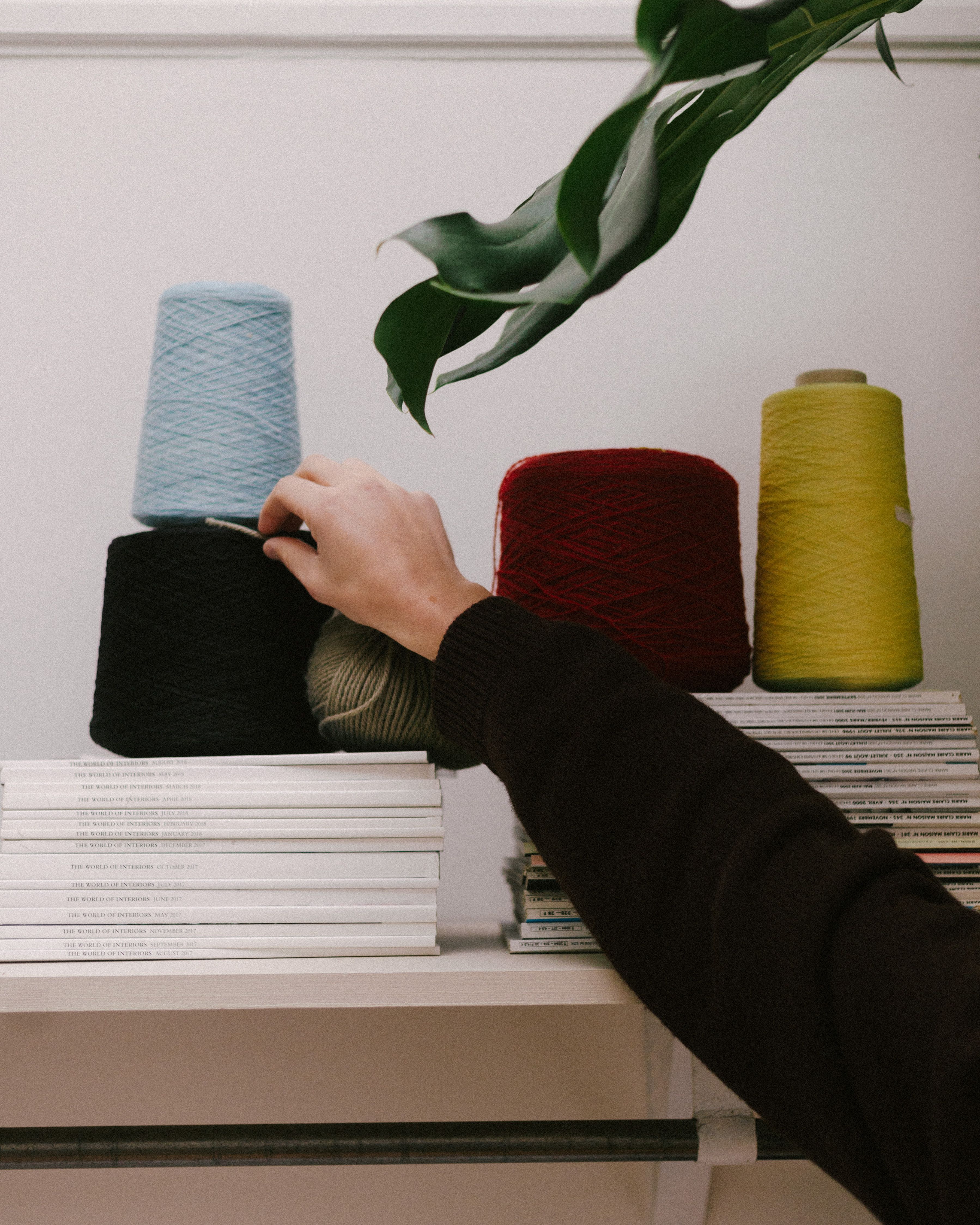
What I love so much about knitwear is that it carries a lot of emotion. It protects you in a way.
What I love so much about knitwear is that it carries a lot of emotion. It protects you in a way.

Fashion is driven by trends and innovation. How do you stay up to date with everything?
Yes. A big part of my job is research. It's not only exploration research or imagery research but also technical research. For instance, next week, I'm going to Florence for the yarn fair. This is where all the mills produce the yarn, but also where the knit factories or the factories who produce knitting machines come. They present their latest innovative technologies. It's super interesting for that matter. Aside from that, I visit a lot of archives and whenever I'm in a vintage shop I look at older knits.
You ask about novelties or innovative things, but there's also looking at the past which is as important, and it helps you to make new things.
You ask about novelties or innovative things, but there's also looking at the past which is as important, and it helps you to make new things.
Have you seen big changes in how much knit is worn or incorporated in collections since you started your career?
Have you seen big changes in how much knit is worn or incorporated in collections since you started your career?
I have the feeling that people today want to have a cozy feeling, and maybe it's also because of the times that we're living in. They don't want to look too modern. I think people want to feel safe and cozy. It is about the warmth that knitwear gives.

That leads us the knit accessory we designed. Can you explain more about the process of making the collar?
The goal was to create an accessory, which is a small and soft accessory. Something very versatile that you can wear a lot and combine a lot. Something made to accessorize again with the 246 pendant clips. I personally always loved the Steve Jobs look. The turtleneck... very classy. Then one thing led to the other and that's how designed this collar.
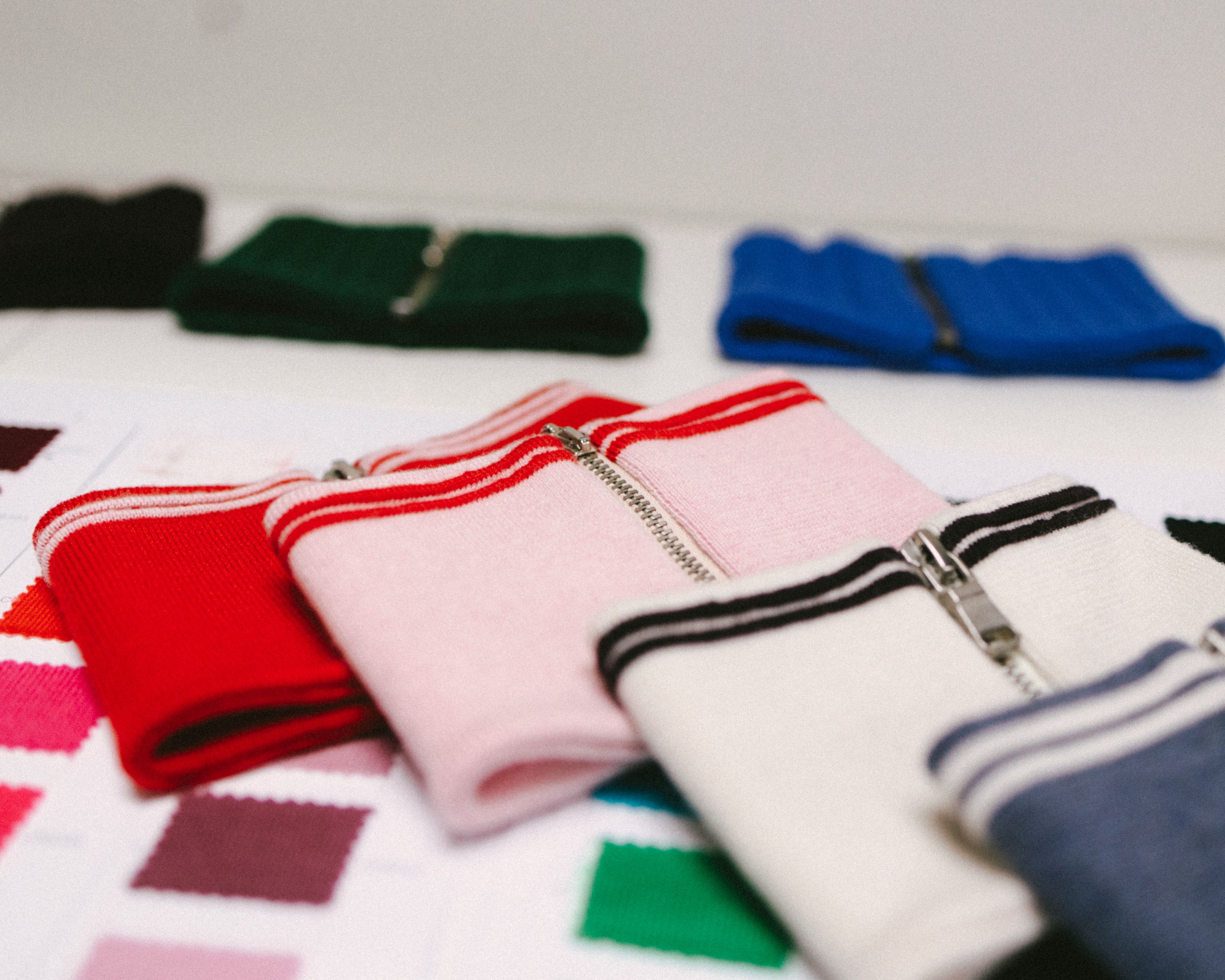
Something very versatile that you can wear a lot and combine a lot.
Something very versatile that you can wear a lot and combine a lot.
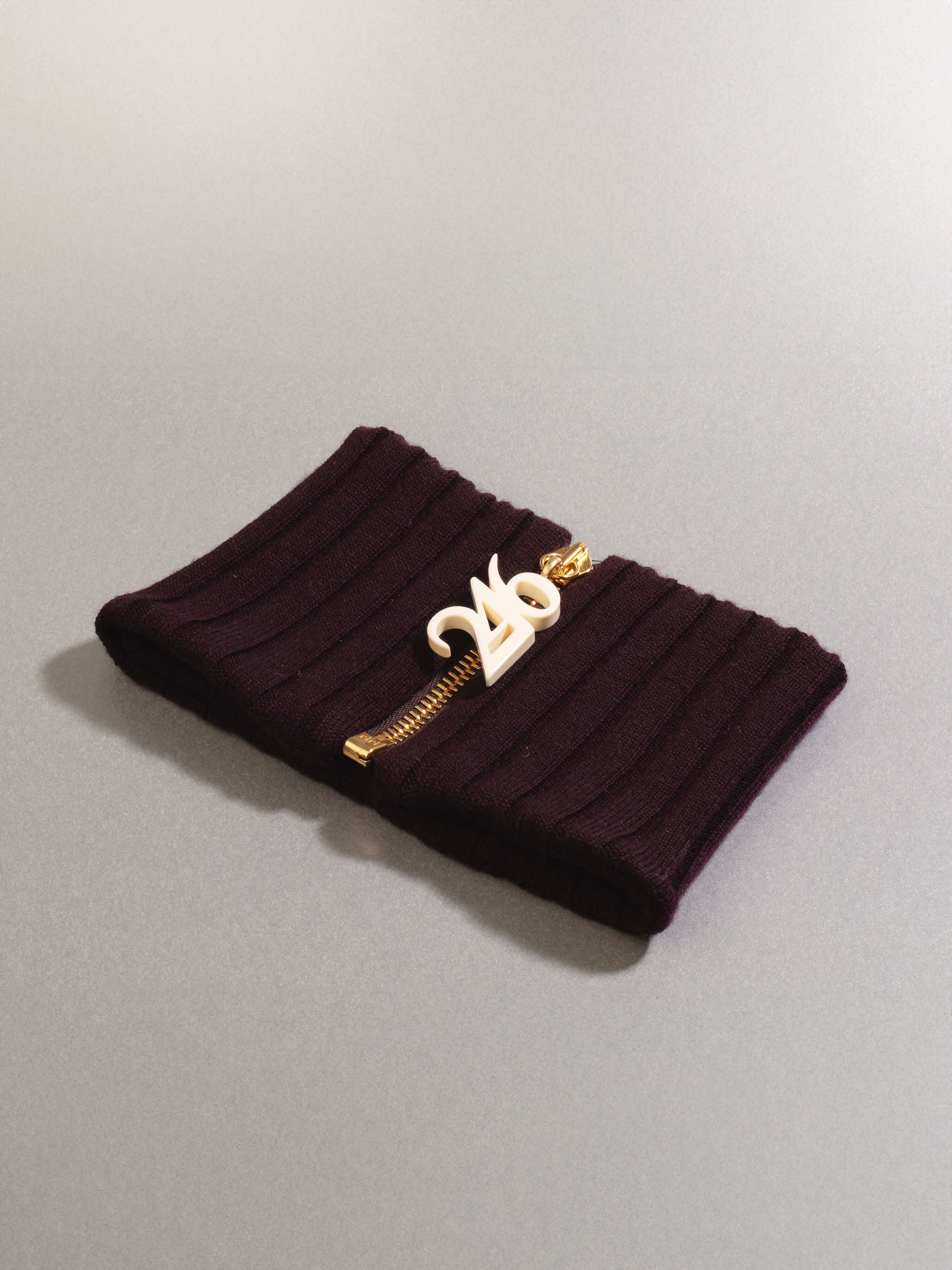
How would you style the collar? Which one is your favorite?
Right now I would go for the aubergine collar because I love to match things down, but it's also kind of mismatched and there's like a glimpse of skin. I'm also very much into the ones with the stripes, which give you the sporty element.
We worked on a technique, which is inspired by tennis polo shirts with that archetypal polo shirt collar, to give them more relief. Styling-wise, I think that's a nice thing. It's very versatile. You can just style it with whatever, not necessarily knitwear I would say. It's also very nice just over a shirt.
How do you see your future work and evolution in your life?
How do you see your future work and evolution in your life?
First of all, I'm very grateful that I'm able to work on this level with so many nice and inspiring people. I hope it can continue like that. Potentially grow. But I'm very busy already, so I guess the next thing is to start working with interns, which I've only done while I was working for fashion houses, not as an independent. The goal to grow slowly but steady.
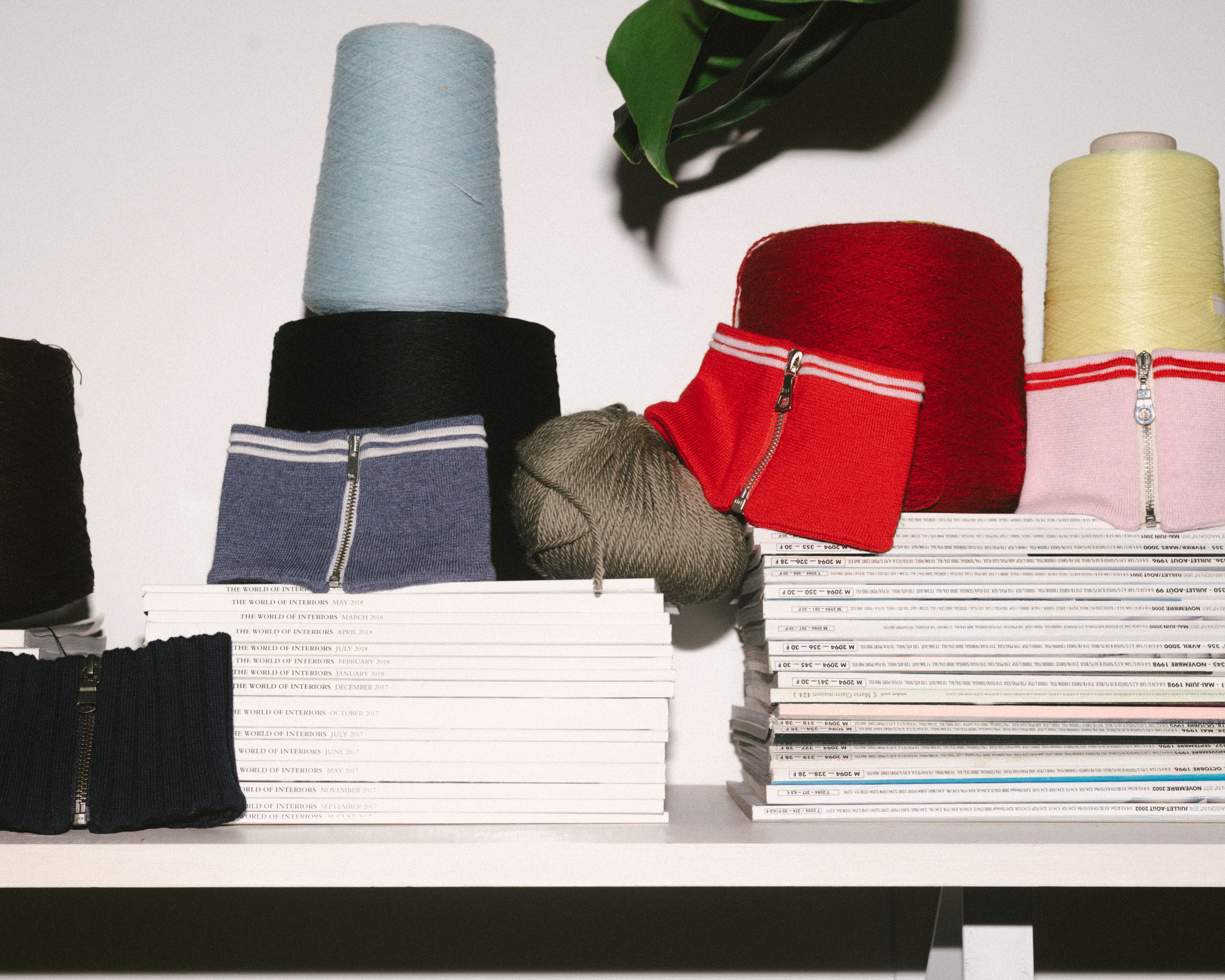
Who are some artists, creatives, and brands you admire?
Many, many, many. The use of color is very important for me. So I would say, Ugo Rondinone for instance. I really like bright colors and popping colors. And then there's Louise Bourgeois, who I admire for her works with textiles. And Joseph Beuys, too. So, not necessarily one in particular. Artists are always part of my research.
As for brands, I'm a very big fan of Prada and Miu Miu, which are two kinds of extremes and yet very close to each other.
Has your view on the industry of fashion changed, before starting to study versus after?
Has your view on the industry of fashion changed, before starting to study versus after?
I always knew that it is a very tough industry, and then you have like a little taste of it in the academy. You'll think, 'oh, this is really tough, the industry will probably be like this.' But the real industry is even tougher. It's it's very demanding, it's very fast. You really have to love doing this kind of job in order to be able to work in it.
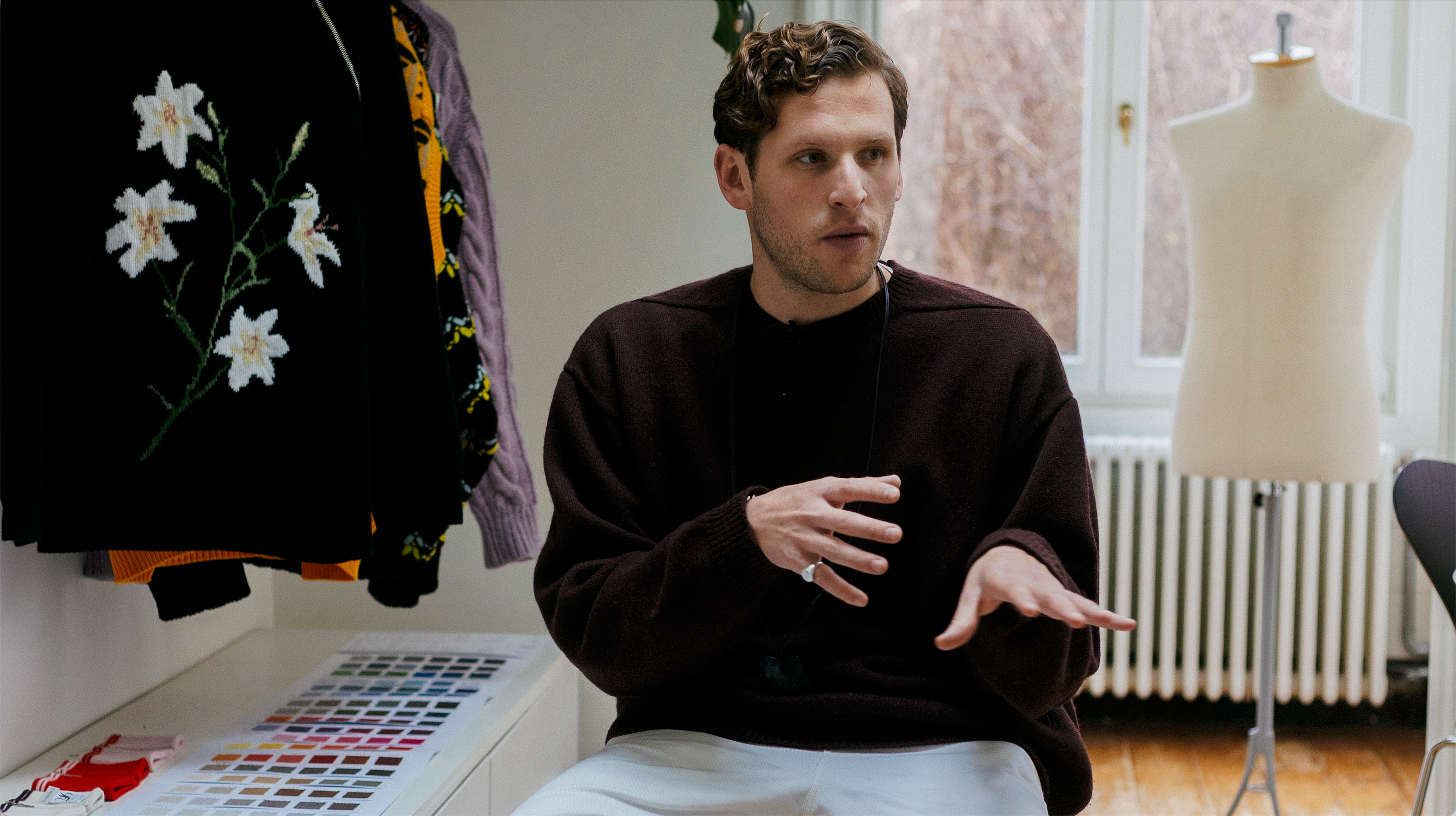
One question we always ask as we are The TwentyFour Six. What do you choose to do on your seventh day or your ideal day off?
One question we always ask as we are The TwentyFour Six. What do you choose to do on your seventh day or your ideal day off?
Nothing fashion-related. I love to go to nature. I love to walk and hike. Fashion is a very capitalistic and busy world. And then I like the complete opposite of going back to nature and quiet.
